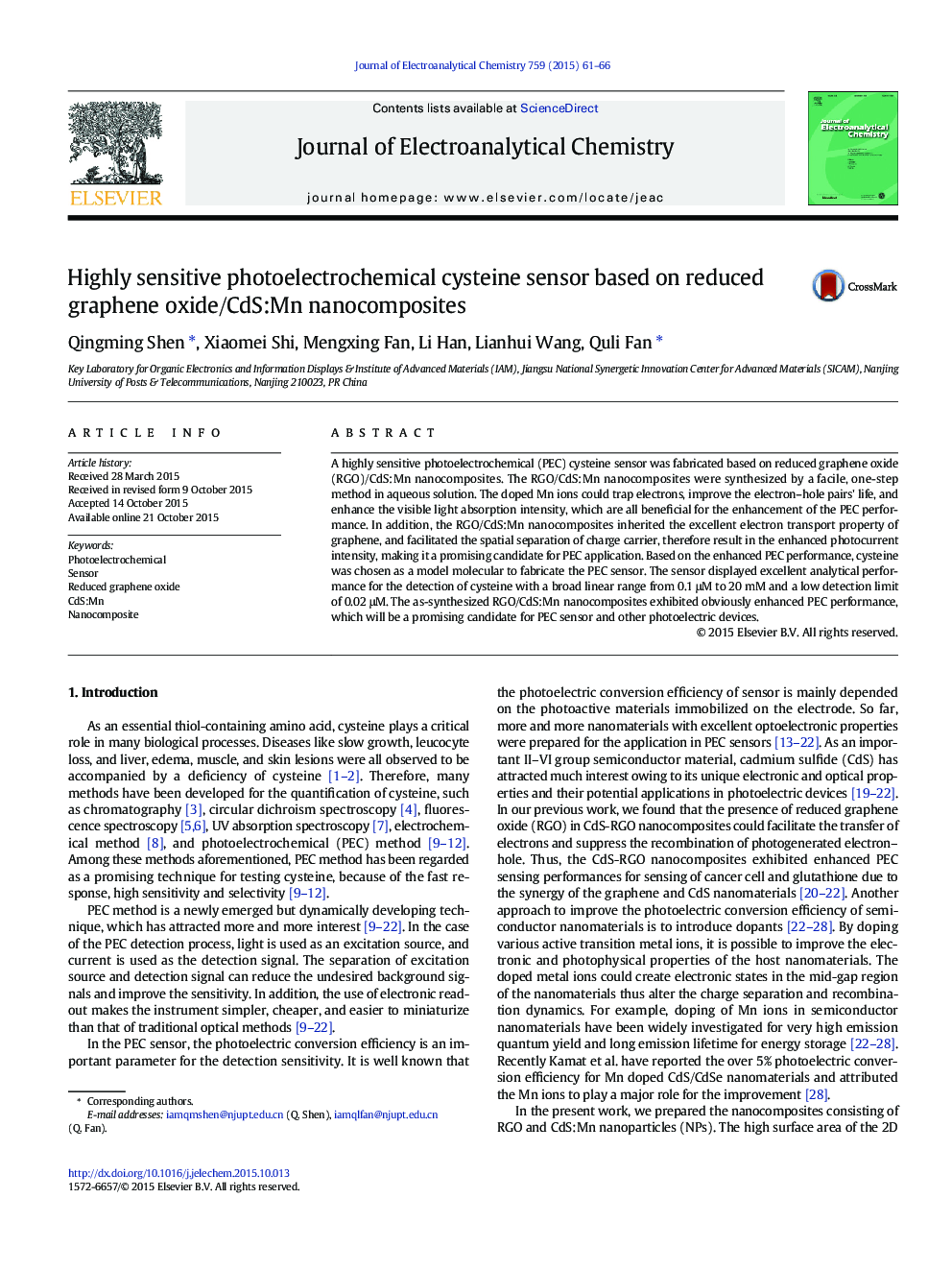| Article ID | Journal | Published Year | Pages | File Type |
|---|---|---|---|---|
| 218134 | Journal of Electroanalytical Chemistry | 2015 | 6 Pages |
•Facile preparation of reduced graphene oxide (RGO)/CdS:Mn nanocomposites•The RGO/CdS:Mn nanocomposites showed enhanced photoelectrochemical performance.•Fabrication of highly sensitive photoelectrochemical cysteine biosensor•Broad linear range from 0.1 μM to 20 mM and a low detection limit of 0.02 μM
ABSTRACTA highly sensitive photoelectrochemical (PEC) cysteine sensor was fabricated based on reduced graphene oxide (RGO)/CdS:Mn nanocomposites. The RGO/CdS:Mn nanocomposites were synthesized by a facile, one-step method in aqueous solution. The doped Mn ions could trap electrons, improve the electron–hole pairs' life, and enhance the visible light absorption intensity, which are all beneficial for the enhancement of the PEC performance. In addition, the RGO/CdS:Mn nanocomposites inherited the excellent electron transport property of graphene, and facilitated the spatial separation of charge carrier, therefore result in the enhanced photocurrent intensity, making it a promising candidate for PEC application. Based on the enhanced PEC performance, cysteine was chosen as a model molecular to fabricate the PEC sensor. The sensor displayed excellent analytical performance for the detection of cysteine with a broad linear range from 0.1 μM to 20 mM and a low detection limit of 0.02 μM. The as-synthesized RGO/CdS:Mn nanocomposites exhibited obviously enhanced PEC performance, which will be a promising candidate for PEC sensor and other photoelectric devices.
